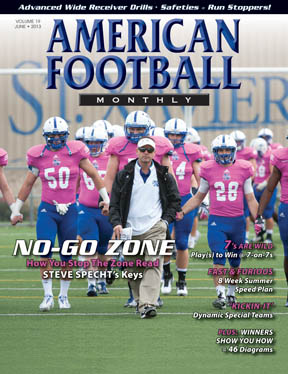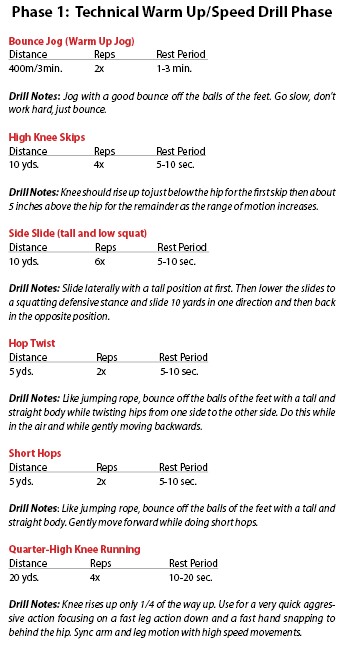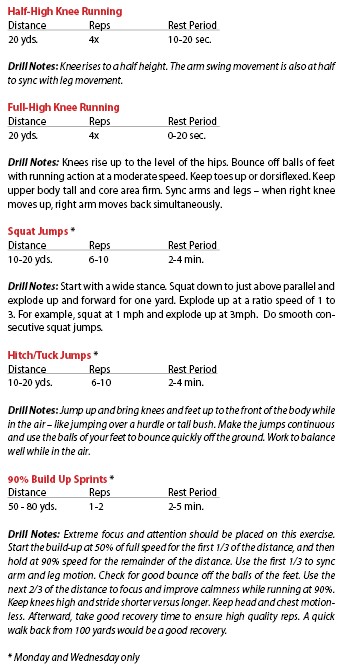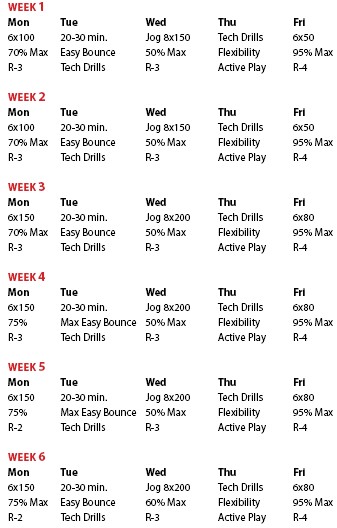Article CategoriesAFM Magazine
|
Summer Speed Work – This 8-week speed conditioning program will have your athletes primed and ready for August camp.by: Ken TaylorThe Speed Doctor © More from this issue If your program is like most, you have an extensive pre-season strength training program designed to ensure your players will be in their strongest physical condition when your camp practices start in August. They’ll certainly be strong, but will they be fast? Will they have had the necessary training to execute the fast-paced offenses that so many teams employ today? To achieve a balance between strength and speed, consider implementing a structured speed conditioning program to complement your weight room routine. The following 8-week program has been used successfully by many programs that I have worked with. It is designed to develop, build and maintain speed and is not necessarily concerned with change of direction or agility conditioning. Those should be practiced during camp itself. The program is divided into two phases – the warm-up and speed drill phase and the speed conditioning phase. Both phases should be used every day that speed training is conducted, as the drills in the first phase prepare the body for a high-quality conditioning phase. I have provided an outline for a Monday-Friday workout schedule. Even with as many as 11 drills plus speed conditioning, the total daily workout can be completed in less than an hour. Depending on the fitness level of your athletes, you may want to start workouts with lower intensity and lower goals in the first few weeks. Be flexible. This is not a “one size fits all” program and it can be tailored to meet the individual levels of your players. It is, however, useful for all positions – including linemen – and will result in you having a faster team come August.
After successfully completing this speed conditioning program, the athlete will easily be able to handle the August football practices at full speed including conditioning runs after practice. Make sure you are aware, alert and available to your players to make adjustments. |
|
| HOME |
MAGAZINE |
SUBSCRIBE | ONLINE COLUMNISTS | COACHING VIDEOS |
Copyright 2024, AmericanFootballMonthly.com
All Rights Reserved







